Westboro Baptist Church Boycotts Durham School of the Arts
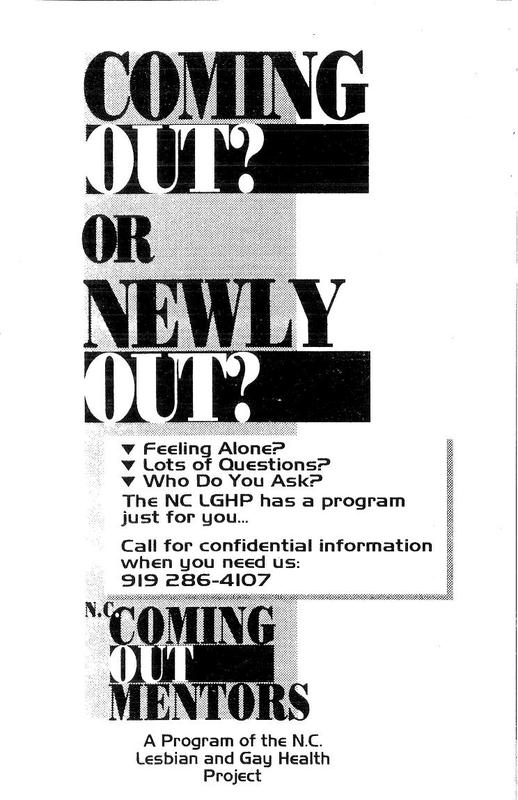
The Durham Lesbian and Gay Wellness Project (LGHP) was founded in 1982 "to openly and affirmatively promote individual and community well-being of gay men and lesbians…" Founders David Jolly, Carl Wittman, Timer McBride, and Aida Wakil wanted to connect gay men and lesbians with gay-friendly physicians and more information about their health needs, given that the HIV/AIDS crisis was looming, revealing deep homophobia in the healthcare arrangement.
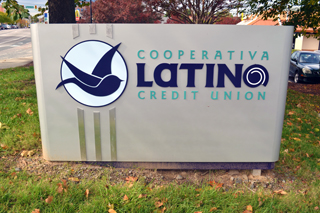

In 1927, Marian Anderson, a famous African-American opera singer, performed at the Carolina Theater to a Black and white audience. Despite existence granted admission to this event, Ms. Anderson'south Black fans were forced to enter through a different door, pay at a dissever ticket booth, and use seats that required walking up three extremely steep, unsafe flights of stairs.

iNSIDEoUT 180 empowers LGBTQ students in loftier schools across the Triangle. Run by the youth with adult back up, the arrangement plans Queer Prom and helps students organize new Gay Straight Alliance (GSA) organizations in their schools. They often run into with resistance, but also requite youth a stiff voice and a safe place to exist themselves.
Jackson: iNSIDEoUT is a network of local GSAs in the Triangle and it organizes events and basically unifies all of those loftier schools and fifty-fifty some of the universities.
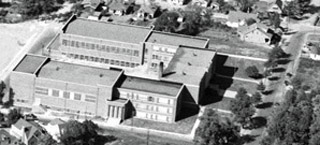
"What shall we teach our children about race and race relations?" This question from Wallace Nelson, a Cincinnati representative of the Congress for Racial Equality, silenced the Hillside Loftier School Parent-Teacher Association meeting on January 14th, 1952.
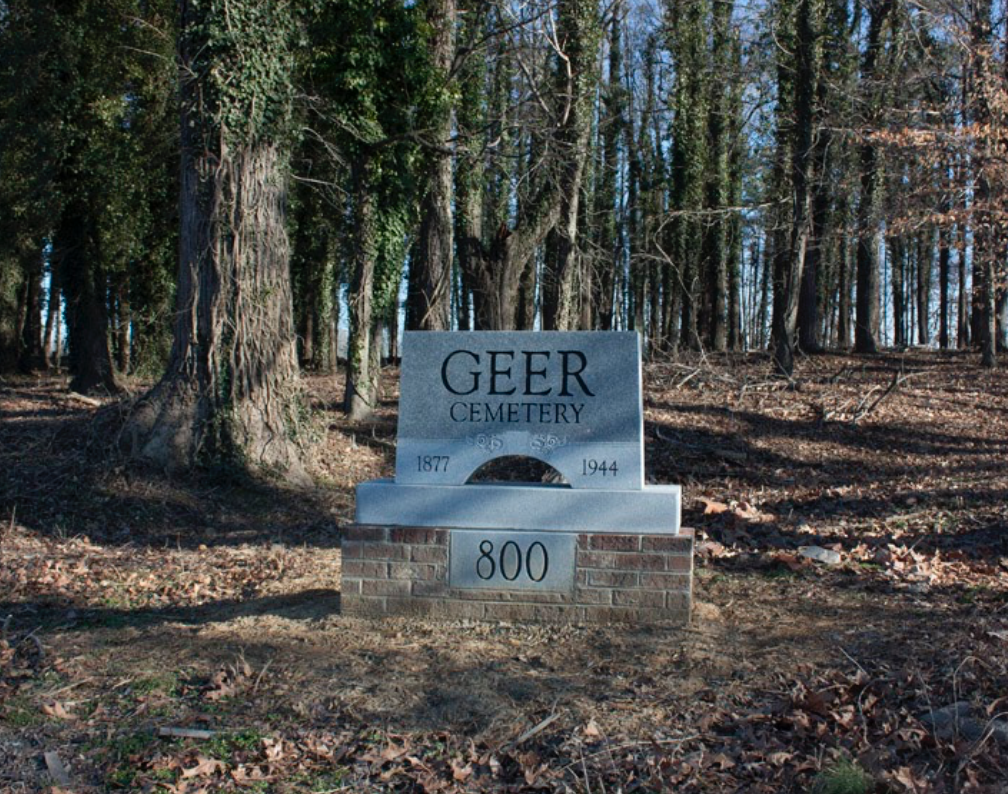
Geer Cemetery is the final resting place for many notable members of Durham and North Carolina'southward Black community including Edian Markum, founder of St. Joseph's A.M.East. Church building, Margaret Faucette, the founder of the White Stone Baptist Church, and Augustus Shepard, whose son founded North Carolina Fundamental Academy. But it all started in 1876 when an 11-year quondam boy working on the farm of Jesse Geer was accidentally killed by a horse, and his family requested that the child be buried nether a tree near the site of his death.
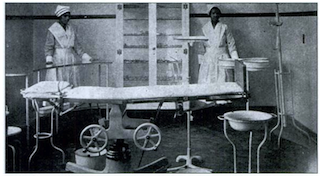
Lincoln was the merely hospital within a 25-mile radius of Durham that would treat African Americans until the early 1960s when Watts Hospital integrated its wards. Earlier this integration, Blacks oftentimes turned to midwives and home remedies for their healthcare. Dr. Stanford Warren, John Merrick, and Dr. Aaron Moore, Durham's offset Black physician, founded Lincoln hospital in 1901 then that the African American community had its own medical facility where Black physicians and nurses could practise and receive training.
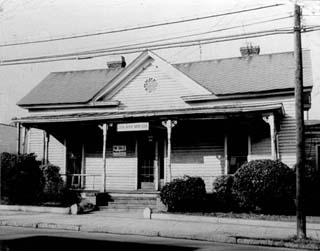
Durham has made a commitment to its youth since the founding of the John Avery'due south Boys & Girls club. In the spirit of John Moses Avery, the John Avery Boys & Girls Club reflects a sense of community in Durham for African American youth and Avery's pursuit for equality of African Americans and enforcement of his beliefs. John Moses Avery was a North Carolina native and tireless champion for the residents of Durham and used his influence as a member of the AME Church and a resident too to empower and promote the values of education and the significance of family unity.
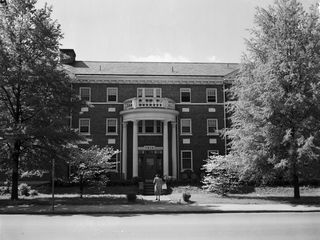
A safe space to gather, a safe place to unite. A place to be proud of your identity. In 1971, eight years later on Betty Freidan's publication The Feminine Mystique provided a manifesto for the movement of second-wave feminism in the United States, the Durham YWCA opened its internally-sponsored Women's Eye. The plan was first led by YWCA program committee chair Muriel Smith, with the original intention of simply creating a Women'due south Library focused upon literature on women's rights and history.
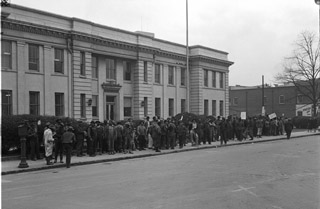
"This is a existent travesty of Justice." The travesty of justice, which Eugene Hampton Junior was referring to, was the Bacon Street Project and the racial tensions in Durham surrounding public housing policy. On July 20th, 1967, a group of 300 African Americans marched the 10 blocks from St. Joseph's Church to Metropolis hall "to demonstrate to the white folks nosotros [African Americans] could march peacefully,"
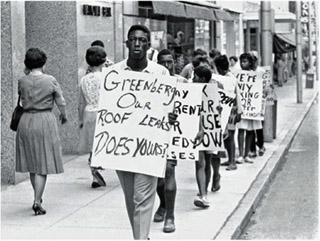
"Your Neighbor is a Slumlord."
"High Rent for Firetraps."
"My Children Sleep with Rats."
Protesters with painted signs bearing these word marched outside both Abe Greenberg's office and home during the summer of 1966 in response to his unwarranted hikes in rent and disregard for the needs of his tenants by not meeting Durham'due south housing codes. Most of the demonstrators were low-income black women, who, out of frustration, even tried to appeal to Mrs. Greenberg's sympathy by describing the inadequate living situations of their children.
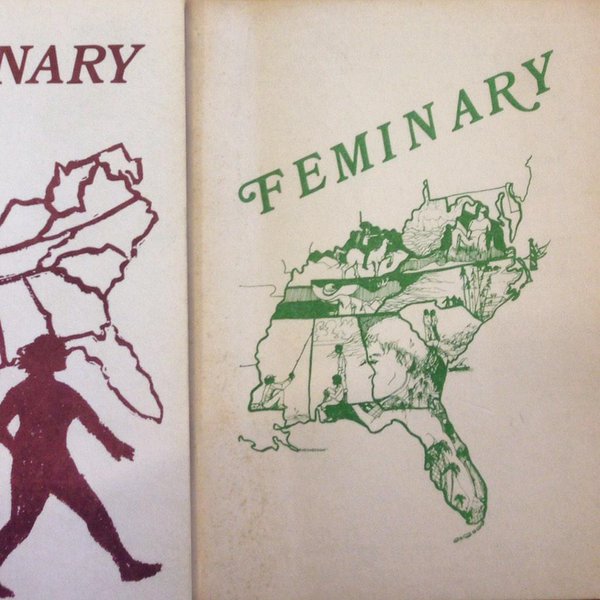
Feminary was a Southern Feminist periodical, written and edited by a Lesbian Feminist women'due south collective in Northward Carolina's Triangle Area between 1969 and 1982. "Feminary" was really the publication's third name, succeeding "The Research Triangle Women's Liberation Newsletter" and "The Feminist Newsletter." The journal's founders—most of whom were graduate students at The Academy of North Carolina at Chapel Hill at the time—originally designed the newsletter to aid feminist groups in the Triangle Area communicate with each other.
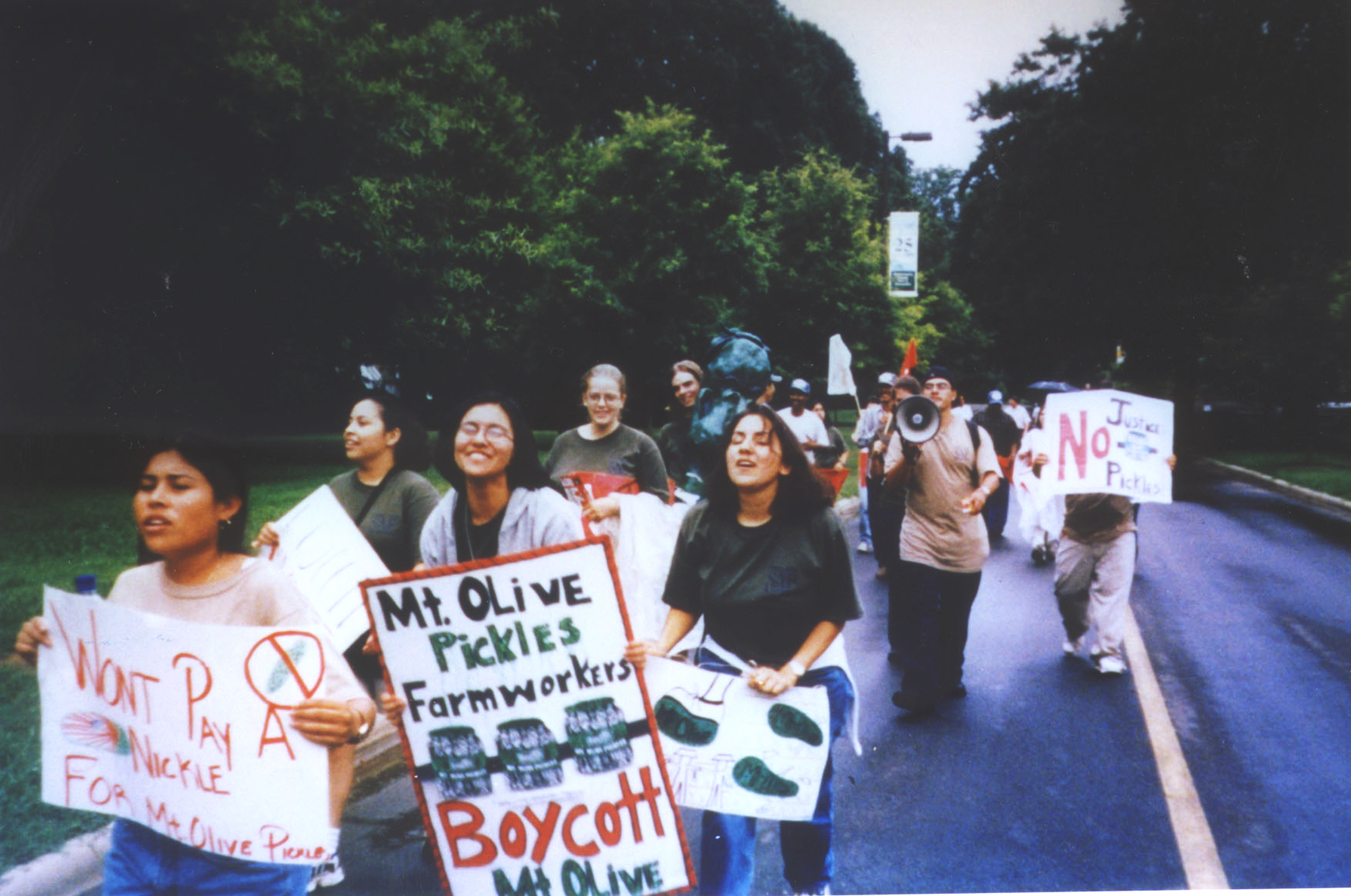
Student Action with Farmworkers (SAF) is a Durham-based non-profit organization committed to fostering collaboration and understanding betwixt students and farmworkers in order to promote justice in agricultural systems and equitable, safe, and dignified working conditions for farmworkers.
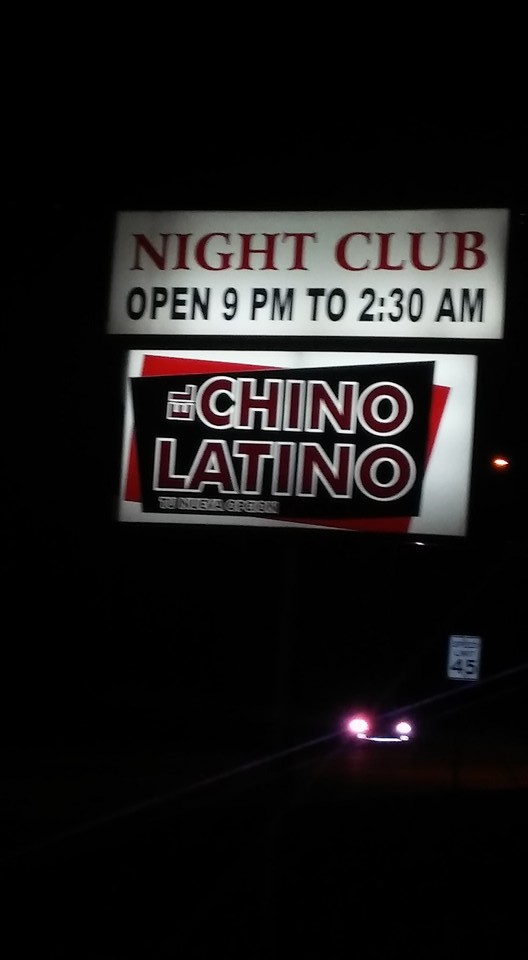
El Chino Latino serves equally a half restaurant-half night club, providing patrons with hybrid Chinese Latin American nutrient and elevate shows, dancing, and drinks. Open up since earlier the early 2000's, El Chino Latino represents a unique intersection of the Chinese, Latinex, and LGBT+ communities. Historically, the queer community has been a crossroads of people of all races, religions, and socioeconomic backgrounds, from transgender women of color to homosexual Jewish men.

El Centro Hispano (ECH) was founded in 1992 to advocate for and address the needs of Durham's growing Latinx and Hispanic community. By 1997, ECH became an contained nonprofit, and in 2000, it was a partner in the opening of the first Latino Customs Credit Wedlock (LCCU) in the state. ECH has grown over the past 30 years from serving 200 people to serving thousands. It is now the largest grassroots Latinx organization in the state, with branches in Durham, Carrboro, and Raleigh, North Carolina.
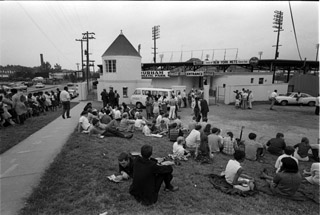
The black community began protesting to integrate this signature able-bodied park, home to the Durham Bulls Baseball game Club in 1957 when the first ii black players, Bubba Norton and Ted Richardson, were added to the roster.
1957 in Durham was a year that hosted both the preservation of segregation also every bit the onset of integration. At this time, the Durham Athletic Park resembled nigh recreational sites downtown. It mainly catered to the entertainment of whites just did have segregated seating for blacks.
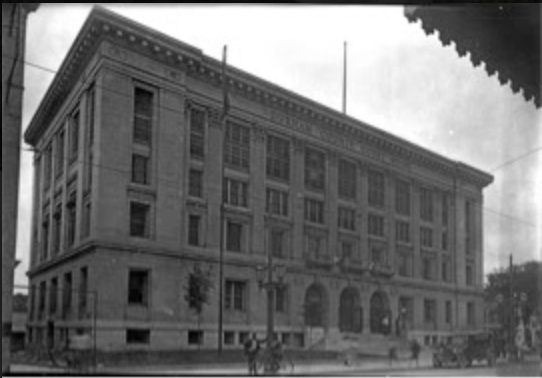
Singing songs and conveying signs that read, "To Brand Democracy More than a Word," students marched from North Carolina College to downtown Durham, where they entered restaurants and stores that upheld segregation policies. The passionate students refused to disperse until the constabulary hauled 130 of them off to jail. The date was May 18, 1963.
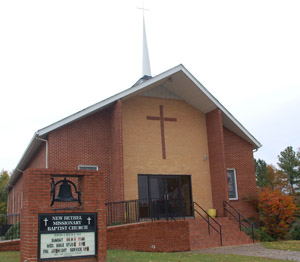
Throughout the 1960s, the Eastward-Westward Durham State highway came charging into Durham to brand the city a hub of urban renewal. As the highway forged its path through the Bull Metropolis, planners were unaware of a major roadblock ahead. The center of Durham'south 200-household Crest Street community was the New Bethel Baptist Church. Located west of Old West Durham, the church building was established in 1879 and served as a pillar of community forcefulness and arrangement. When the expressway threatened to dismantle the church and its neighborhood, citizens took action.
Imagine a heart of creativity and collaboration during the fight for civil rights; a place where leaders and protestors alike could come to stay the night and share their passions. Now imagine a family unit home on Roxboro Street, does that match up with what yous had in your head? Perchance not but the McKissick family home, known as the "Freedom Business firm" or the "Do-Drop-Inn," served every bit "activity central headquarters."
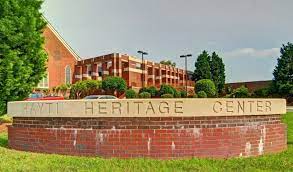
It is impossible to miss the 1000 steeple topped with a Haitian vevè and the elegant stained drinking glass windows of the Hayti Heritage Centre as y'all walk down Fayetteville Street. Once the home to the congregation of the historic St.
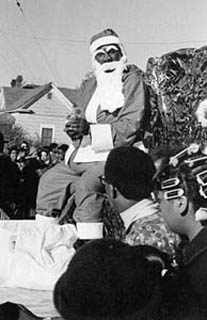
It was a little chilly, but a beautiful day, the morning time of November 29 th , 1968. Anybody was lined up on Fayetteville Street as the yearly Christmas Parade began. The high school band played all of the best Christmas carols and performers were festively dressed to the nines.
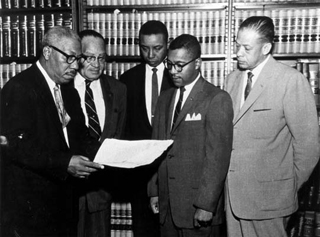
Thomas Hocutt, a Black student from Durham, wanted to become a pharmacist. But in 1933, the University of North Carolina in Chapel Colina denied his application to their Pharmacy school on the basis of race. Attorneys Conrad Pearson and Cecil McCoy took upward his example and with the support of the NAACP, filed a suit against the Academy. This was one the first attempts to integrate higher education in the United States. Despite their best efforts, the case known as Hocutt v Wilson was dismissed because Durham officials withheld Mr.
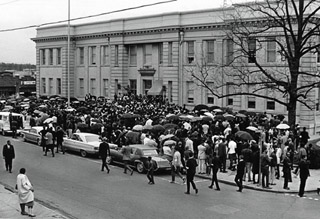
Certain events are and then monumental that they define the soul of a generation. Where were you lot when the planes hit on 9/11? What were you doing when MLK was cut downward past a sniper'south bullet? Such defining moments unite us all through our well-nigh bones commonality—beingness human. Black and white akin, Americans beyond the nation reacted with sorrow and anger to the news of Dr. Martin Luther Male monarch Jr.'south assassination on Apr iv, 1968.
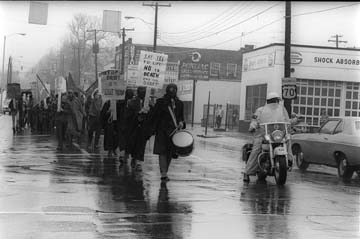
Duke pupil led protesters to the Durham Draft Board donned in the somber black robes of the specter of death. Across the country, these coordinated protests were designed to call attention to use of deadly toxins in Southeast Asia and the death of immature draftees.
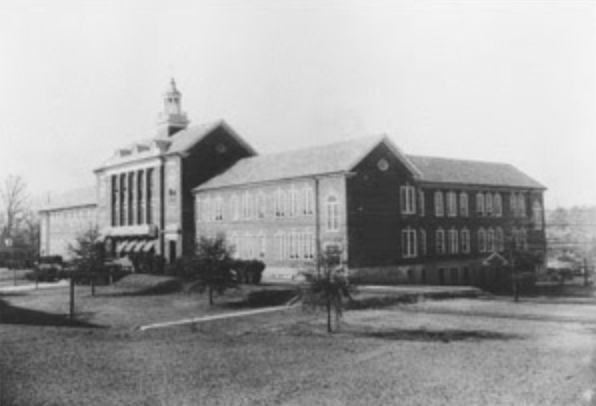
Today, this school building is seemingly ordinary – students with backpacks chat with their friends, struggling to carry their textbooks and school projects, equally the busses line up exterior on the street. Durham High School, founded in 1922 and now known equally Durham School of the Arts, was a crucial site in the fight for school desegregation.
Source: https://www.durhamcivilrightsmap.org/places?sort_by=title&sort_order=DESC&page=1
0 Response to "Westboro Baptist Church Boycotts Durham School of the Arts"
Post a Comment